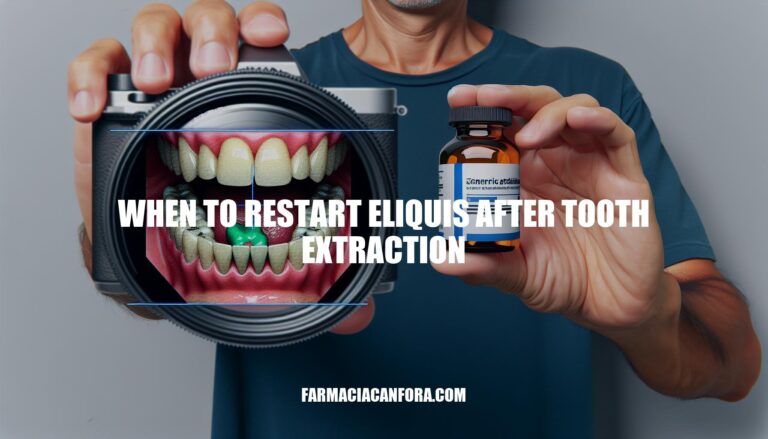


Understanding when to restart Eliquis after a tooth extraction is crucial for maintaining the delicate balance between preventing blood clots and managing bleeding risks. Restarting too soon can lead to excessive bleeding, while delaying it too long increases the risk of dangerous blood clots. Therefore, it’s essential to follow medical advice to ensure both effective clot prevention and safe recovery from the dental procedure.
Restarting Eliquis after a tooth extraction involves considering several key factors:
Patient’s Bleeding Risk: High bleeding risk may require a longer delay before restarting Eliquis. Local measures to control bleeding, such as mechanical pressure or hemostatic agents, are often used.
Complexity of the Extraction: Simple extractions might allow for a quicker resumption (12-24 hours), while more complex procedures might necessitate a longer wait until the risk of bleeding subsides.
Patient’s Overall Health Condition: Conditions like liver or kidney disease, heart disease, or a history of blood clots can influence the timing. Coordination with the patient’s physician is crucial to balance the risks of bleeding and thromboembolism.
Medical authorities, including the American Dental Association (ADA), generally recommend that patients can continue taking Eliquis (apixaban) without interruption for most dental procedures, including tooth extractions. However, if there is a higher risk of bleeding, it is advised to consult with the patient’s physician to determine the best course of action.
For patients who need to stop Eliquis, the typical recommendation is to restart it 24-48 hours after the procedure, depending on the bleeding risk and the patient’s overall health. Always follow the specific advice of your healthcare provider.
Consulting with healthcare providers is crucial for determining the appropriate timing to restart Eliquis after a tooth extraction. This ensures personalized medical advice, taking into account individual risk factors, bleeding risks, and overall health. Always follow your healthcare provider’s guidance for the safest outcome.
Here are some case studies illustrating different scenarios of when to restart Eliquis (apixaban) after tooth extraction:
Case Study 1: Low Bleeding Risk
Case Study 2: Moderate Bleeding Risk
Case Study 3: High Bleeding Risk
These examples demonstrate how guidelines are applied in real-life situations, considering the patient’s bleeding risk and the complexity of the dental procedure. Always consult with healthcare professionals for personalized medical advice.
Restarting Eliquis after a tooth extraction requires careful consideration of several factors, including the patient’s bleeding risk, complexity of the procedure, and overall health condition.
Medical authorities recommend continuing Eliquis without interruption for most dental procedures, but consulting with healthcare providers is crucial to determine the best course of action.
The typical recommendation is to restart Eliquis 24-48 hours after the procedure, depending on the bleeding risk and patient’s health. Always follow specific advice from your healthcare provider.
Individualized medical guidance ensures a safe outcome, taking into account individual risk factors, bleeding risks, and overall health.